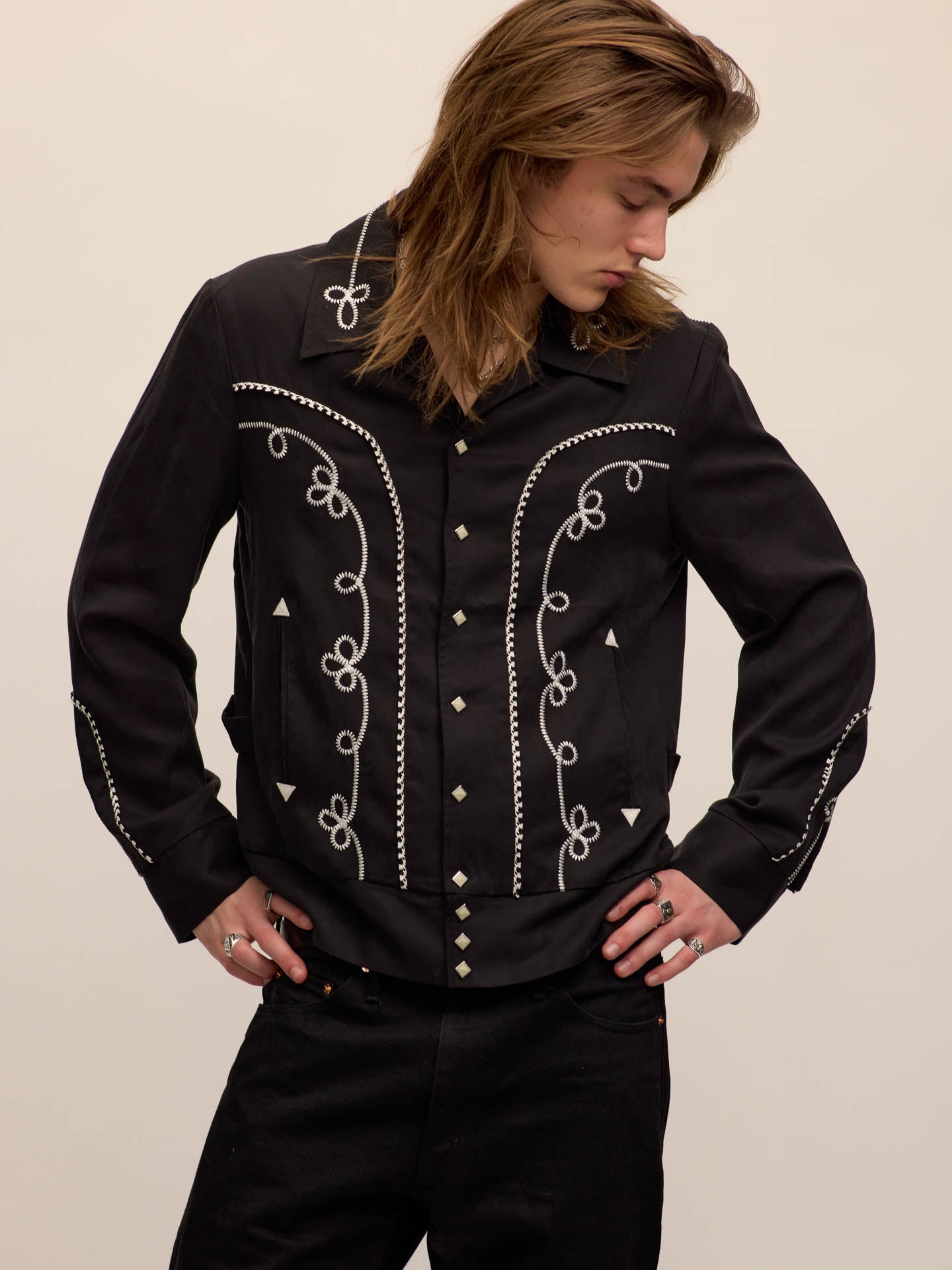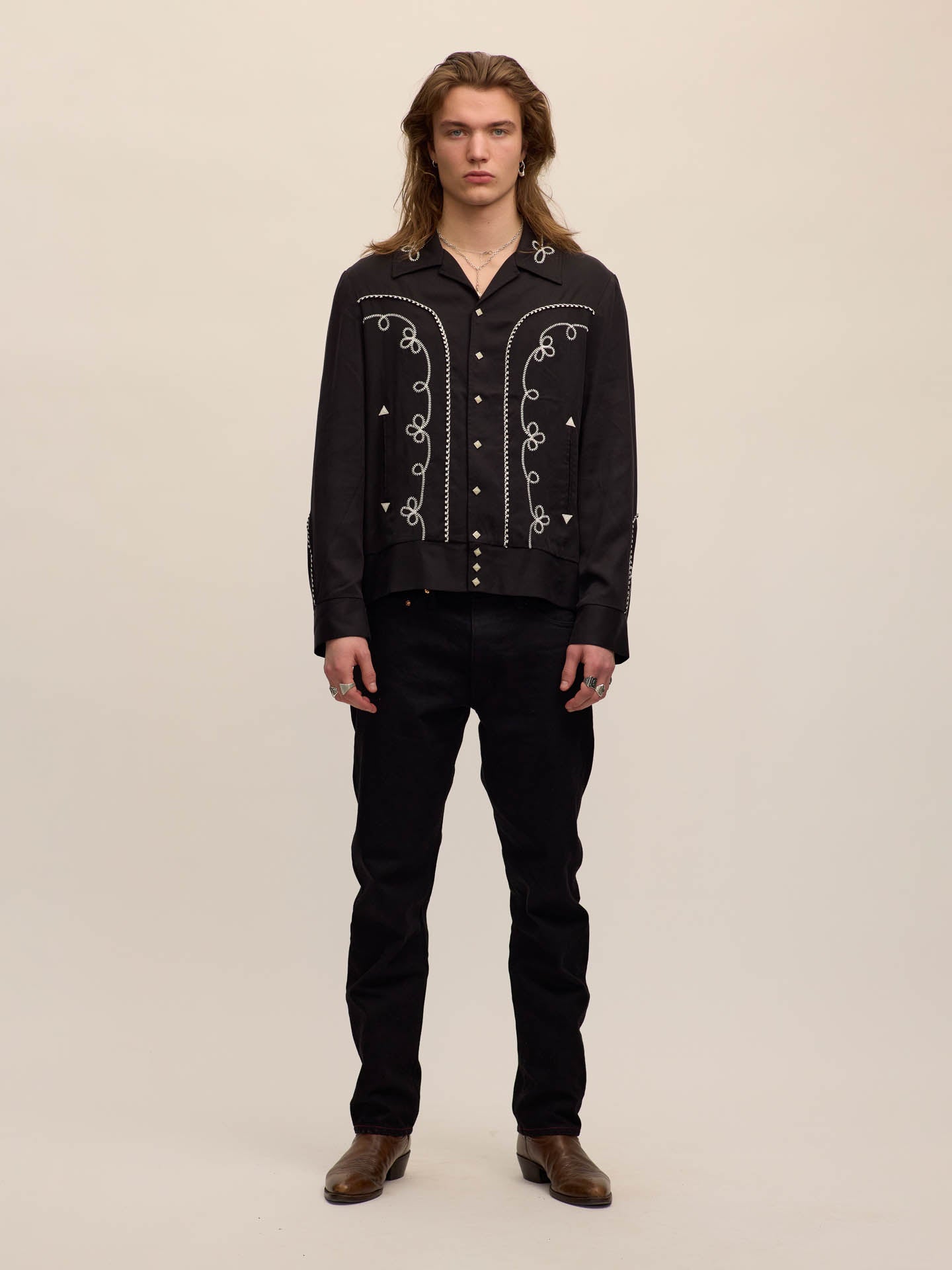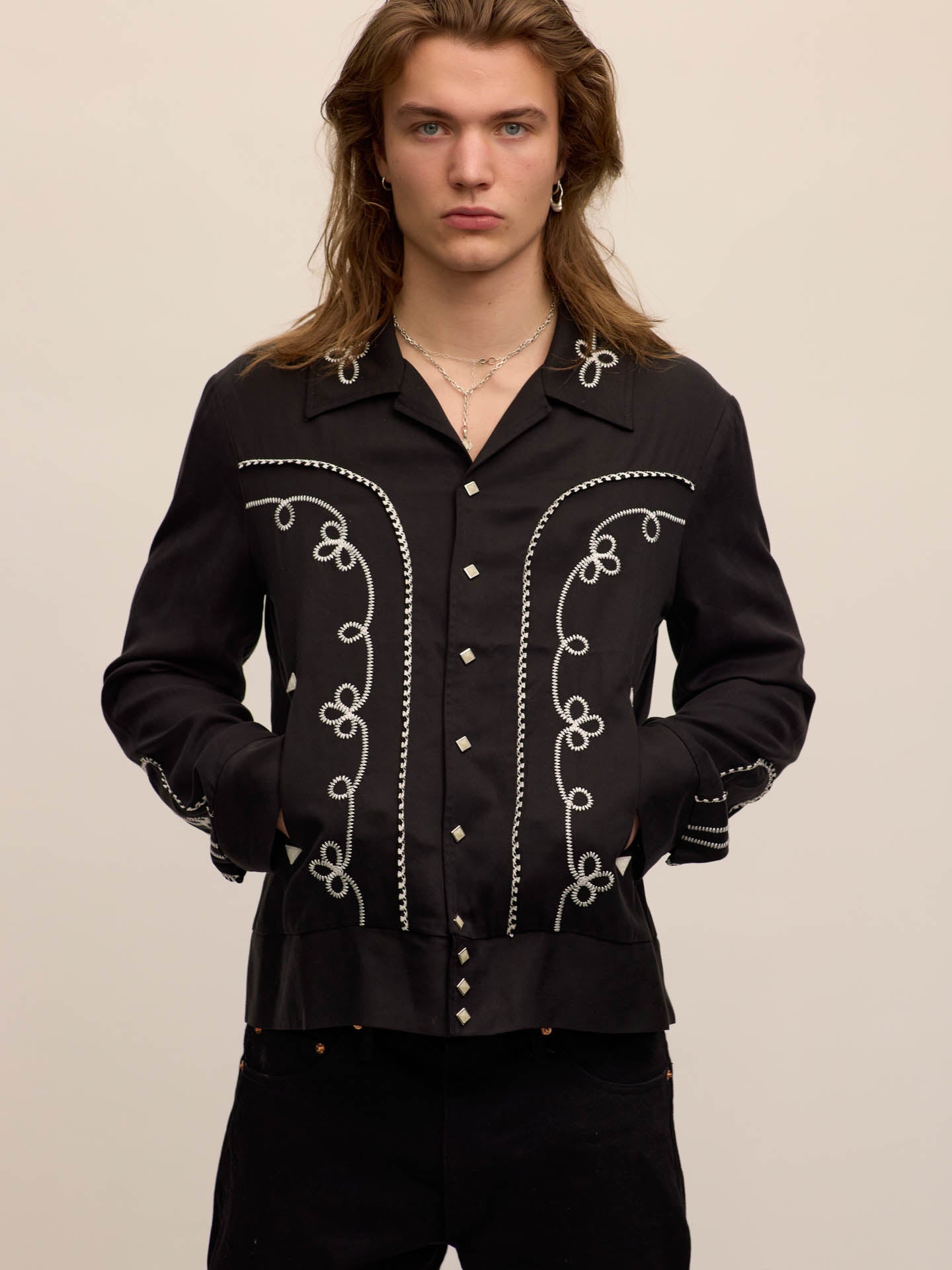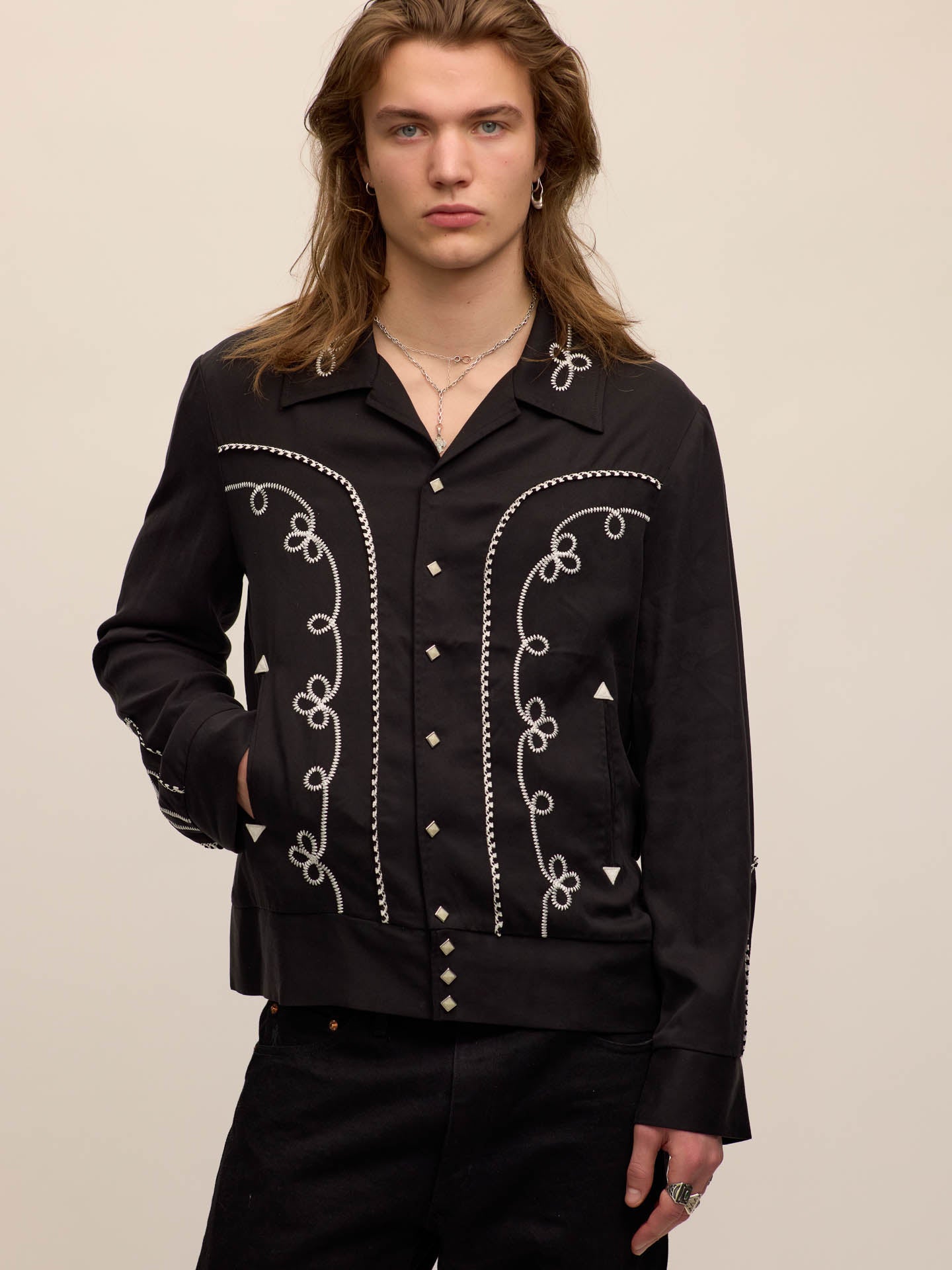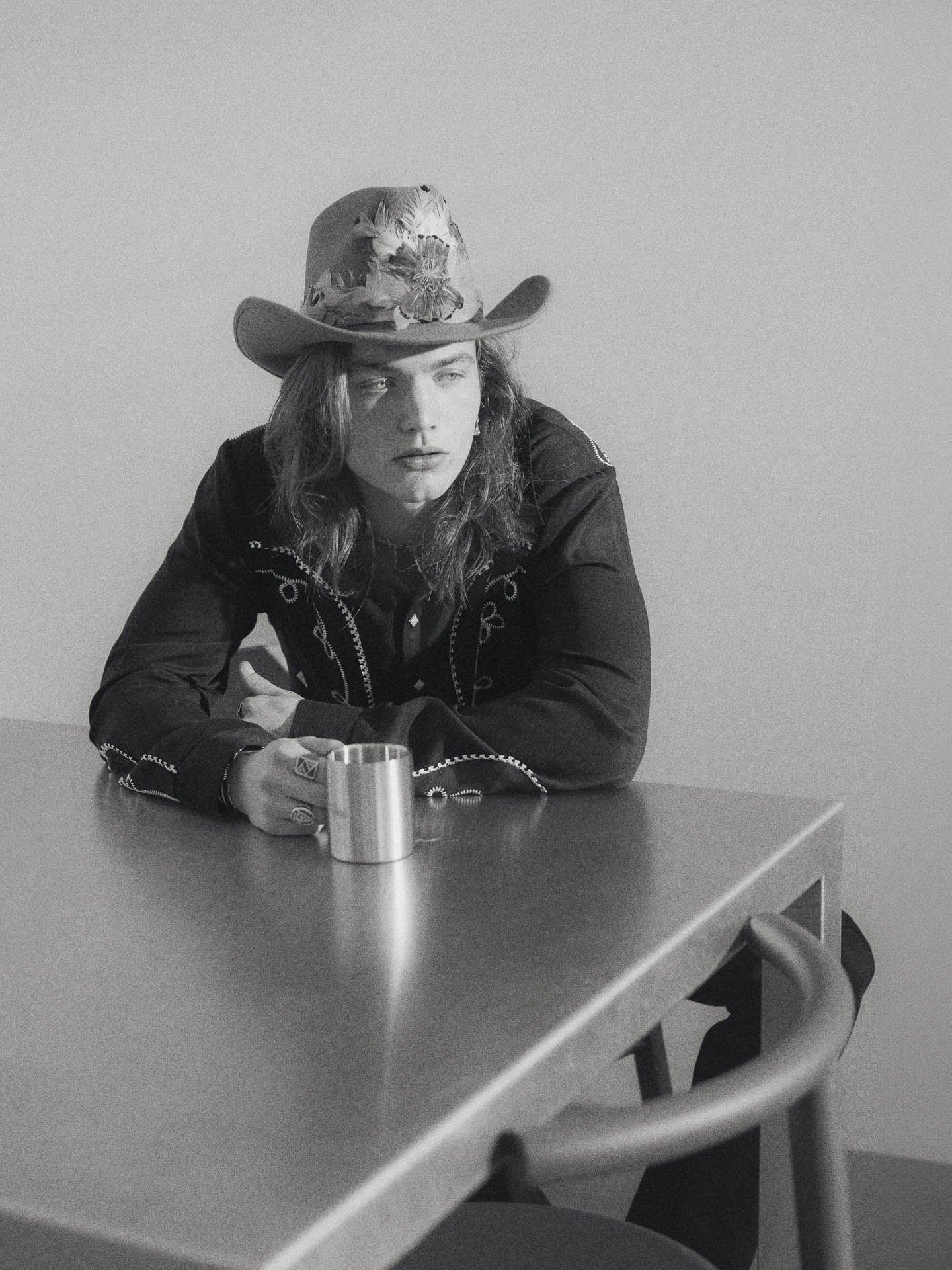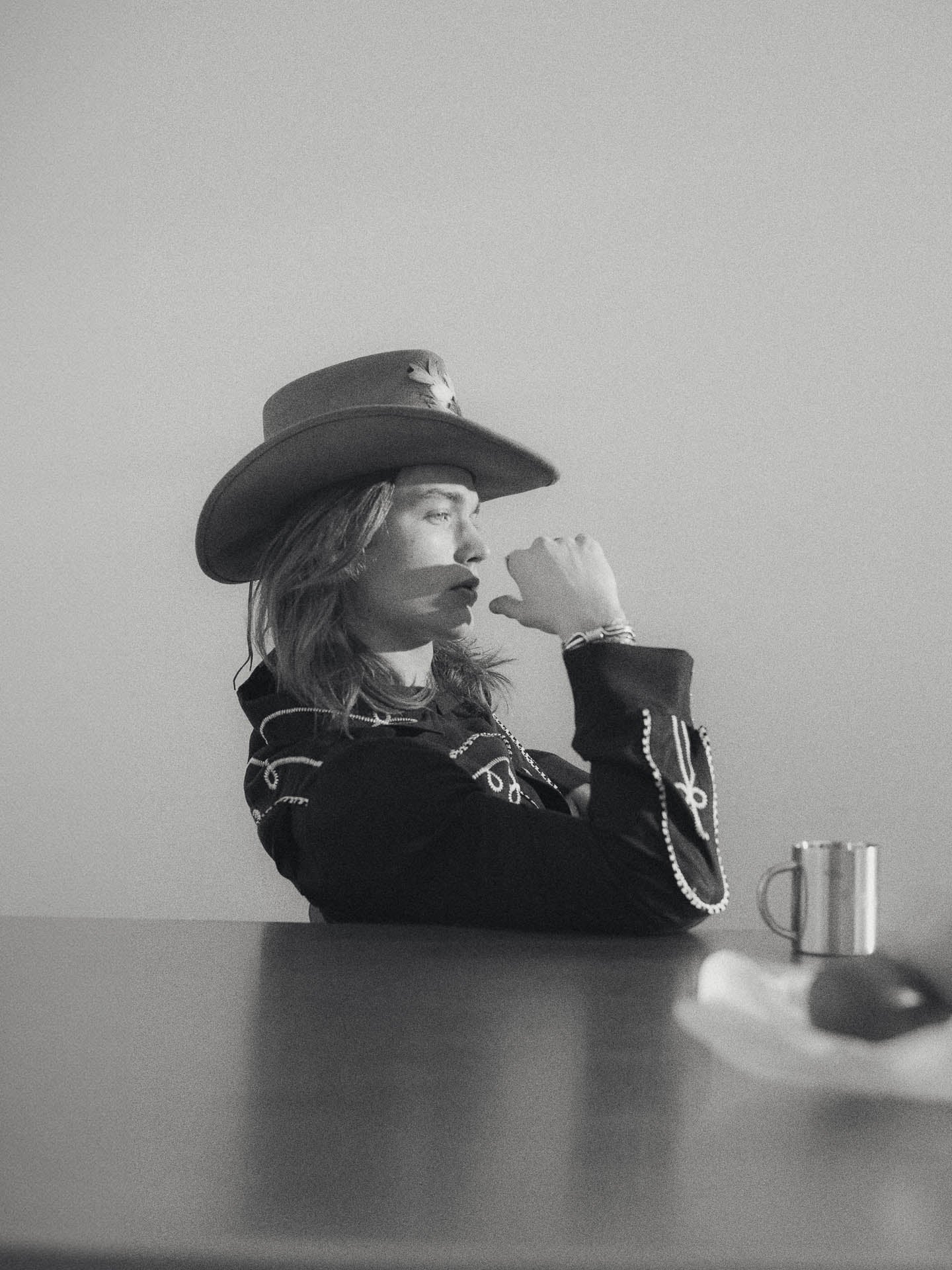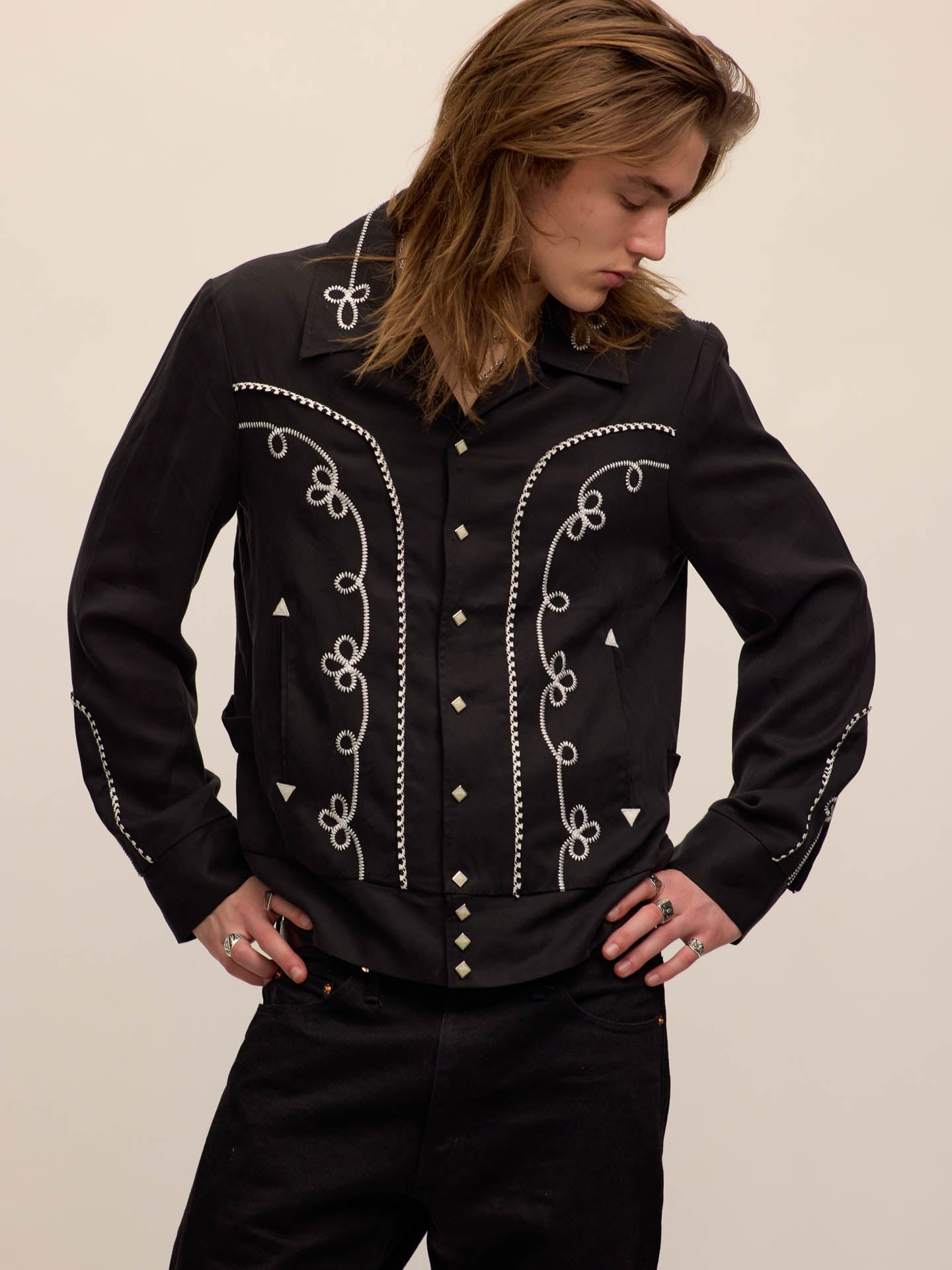Bolero jacket in black Tencel®
Bolero jacket in black Tencel®
SKU:0920306-030100
Couldn't load pickup availability
The Bolero jacket originated in 12th-century Spain, where cattle herders wore it along with low-crowned hats, sashes, tight-fitting trousers, and spurred boots. When Spaniards discovered the New World, they brought this attire with them, leading to the rise of the Vaqueros in Mexico—the direct ancestors of the American cowboy. The cultural and technological exchange between native tribes, Spanish settlers, and Northern Europeans in the American Southwest gave birth to modern Western wear, which includes the iconic Bolero jacket.
In our reinterpretation, we aimed to stay true to the anatomy of the traditional Bolero jacket while giving it a contemporary spin and fit. We chose Tencel® as the shell fabric due to its drapey nature, resembling the Rayon fabric popular in the US during the 60s and 70s. Instead of the traditional elastic waistband, we opted for a straight hem akin to a denim jacket. We added a pleated “action” back for extra movement and a clearly defined back yoke to promote a more defined V-shaped silhouette.
Other features are:
- Contrasting embroidery on front, back and cuffs
- Piping along back and front yoke as well as cuffs
- Action/bi-swing back to improve mobility
- Adjustment tabs on the back
- Pre-shaped tailored sleeves
- Original Scovill® Gripper® duo studs
- Broad waistband
Details & care
Details & care
• Composition: Shell: 100% Tencel®, Lining: 100% Viscose
• Care instructions: Normal wash cycle at 30°, dot not tumble
Size & fit
Size & fit
• Fitted across shoulders, slightly relaxed around chest to favor ease of movement
• Relaxed fit
• Model is shown wearing a size L
• Model measures: chest 33"/ 84cm, hips 31”/77cm, height 6'1"/ 187cm

Share
